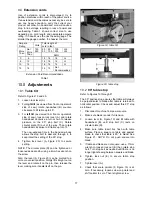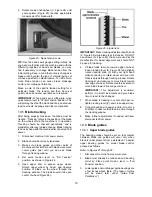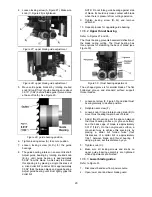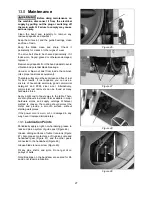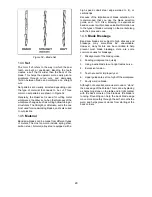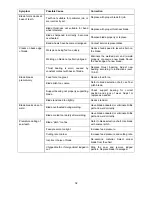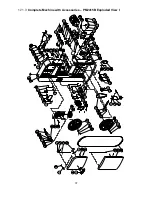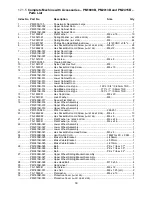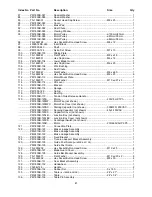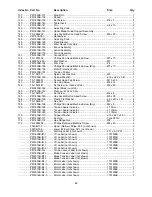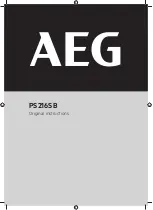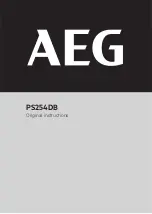
28
14.0
Blade Selection
Using the proper blade for the job will increase the
operating efficiency of your band saw, help reduce
necessary saw maintenance, and improve your
productivity. Thus, it is important to follow certain
guidelines when selecting a saw blade.
Here are factors to consider when selecting a blade:
•
The type of material you will be cutting.
•
The thickness of the workpiece.
•
The features of the workpiece, such as bends
or curves with small radii.
These factors are important because they involve
basic concepts of saw blade design. There are five
(5) blade features that are normally changed to meet
certain kinds of sawing requirements. They are:
1. width
2. pitch (number of teeth per inch)
3. tooth form (or shape)
4. the “set” of the teeth
5. the blade material itself
14.1
Width
Band saw blades come in different standard widths,
measured from the back edge of the blade to the tip
of the tooth. Generally, wider blades are used for
ripping or making straight cuts, such as resawing.
Narrower blades are often used when the part being
cut has curves with small radii. When cutting straight
lines with a narrow blade, the blade may have a
tendency to drift (see “Blade Lead”).
14.2
Pitch
Pitch is measured in “teeth per inch” (T.P.I.) and can
be constant or variable. Figure 50 shows blades with
different pitches.
A fine pitch (more teeth per inch) will cut slowly but
more smoothly. A coarse pitch (fewer teeth per inch)
will cut faster but more roughly.
As a rule of thumb, the thicker the workpiece, the
coarser will be the blade pitch. If you have to cut a
hard or very brittle material, you will probably want
to use a blade with a finer pitch in order to get clean
cuts.
Using a blade with too few teeth may cause vibration
and a rough cut, while too many teeth may cause
the gullets to fill with sawdust and overheat the
blade.
As a general rule, use a blade that will have from 6
to 12 teeth in the workpiece at any given time.
Figure 50 – Blade Pitch
14.3
Shape
Figure 51 shows common types of tooth shape, or
form. Tooth shape has an effect on cutting rate.
Figure 51 – Blade Tooth Shape
The
Regular,
or standard blade, has evenly spaced
teeth that are the same size as the gullets, and a
zero-degree rake (i.e. cutting angle). These offer
precise, clean cuts at slower rates. It is usually a
good choice for cutting curves and making
crosscuts.
The
Skip
type has fewer teeth and larger gullets with
a zero rake. It allows faster cutting rates than the
Regular type, with a slightly coarser finish. It is
useful for re-sawing and ripping thick stock, as well
as cutting softwoods.
The
Hook
type blade has larger teeth and gullets
and a positive rake angle for more aggressive, faster
cutting when re-sawing or ripping thick stock,
especially hardwoods.
Variable-tooth
blades combine features of the other
shapes, with tooth style and spacing varying on the
same blade. This produces smooth cuts while
dampening vibration.
Summary of Contents for 1791257B
Page 11: ...11 7 0 Base hole centers PM1800B PM2013B PM2415B Figure 2...
Page 35: ...35 17 1 1 Complete Machine with Accessories PM 1800B 2013B Exploded View I...
Page 36: ...36 17 1 2 Complete Machine with Accessories PM 1800B 2013B Exploded View II...
Page 37: ...37 17 1 3 Complete Machine with Accessories PM2415B Exploded View I...
Page 38: ...38 17 1 4 Complete Machine with Accessories PM2415B Exploded View II...
Page 58: ...58 This page intentionally left blank...
Page 59: ...59 This page intentionally left blank...
Page 60: ...60 427 New Sanford Road LaVergne Tennessee 37086 Phone 800 274 6848 www powermatic com...




